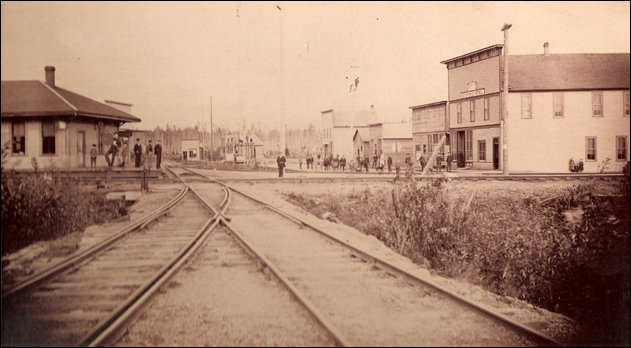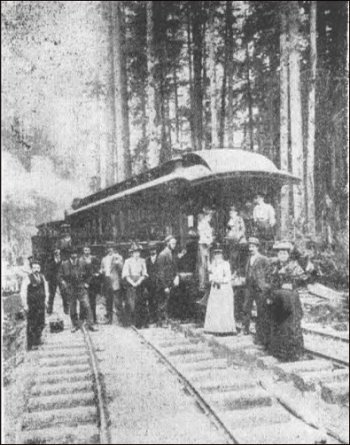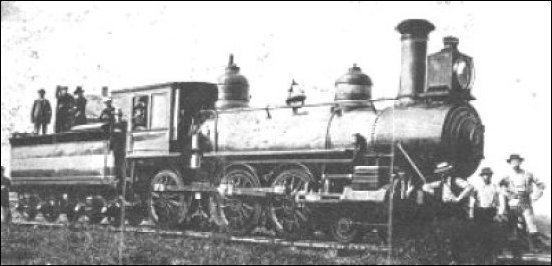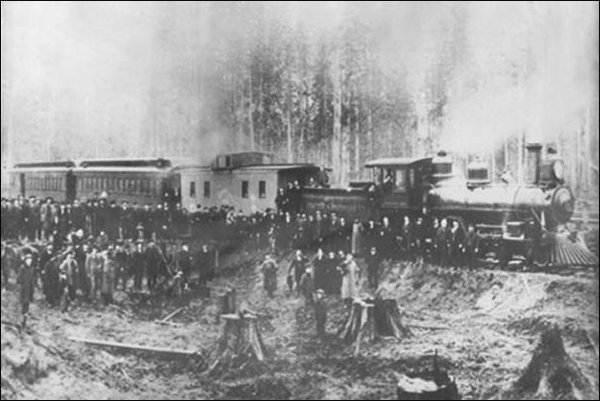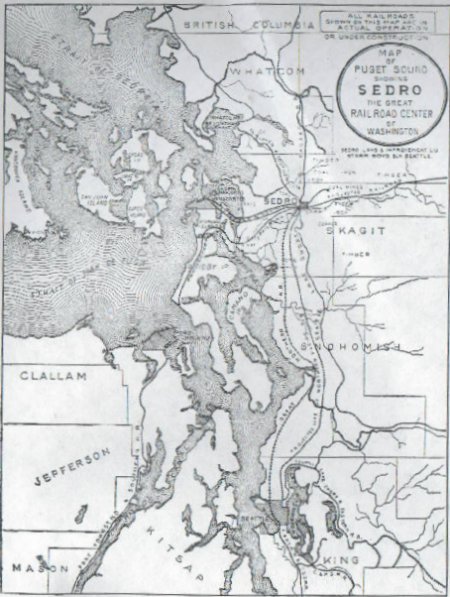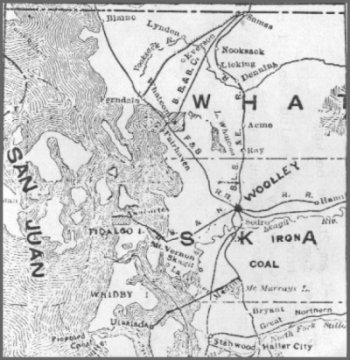Muriel Weissberg of Redding, California, loaned us a copy of this rare photo of the original Woolley Union Depot, which was located on the famous triangle of the three rail lines north of Northern Avenue in old Woolley. She is the granddaughter of Morris Schneider, whose building stood at the far background of the block to the right. Until now, all we had was a very weak second-generation version.
On the left is the depot itself. On the right is Northern avenue. On the corner in the lower right is the infamous Keystone Hotel and saloon, where spirits were served and travelers from the depot were serviced. Although the Fairhaven & Southern tracks were ripped up decades ago and Burlington Northern has ripped out most of the tracks that once led to east to Rockport, the tracks that formed two sides of the triangle are still there.
One wonders why the city of Sedro-Woolley has never turned this into a railroad park for both children and tourists. Instead, the very locus of points for the city is now overgrown with weeds. We are happy, however, that the city has built Hammer Heritage Park on Metcalf street just a block south of the triangle, with considerable donations of time and money by Rotary Soroptomists, Lions and many individuals.
In the rear center of the photo, you can see two buildings built on a diagonal. They were on both sides of the F&S line, which crossed both the other lines from the northwest to the southeast on the way to Mortimer Cook's wharf in old Sedro. Although P.A. Woolley reserved that triangle for the Union Depot, the depot was moved a hundred yards south on the Northern Pacific tracks in August 1901 and stood there until the 1970s. Does any reader know the date that the depot finally closed and when it was razed? In hindsight, what a shame that the building was not restored.
|

 810 Central Ave.,
810 Central Ave., 